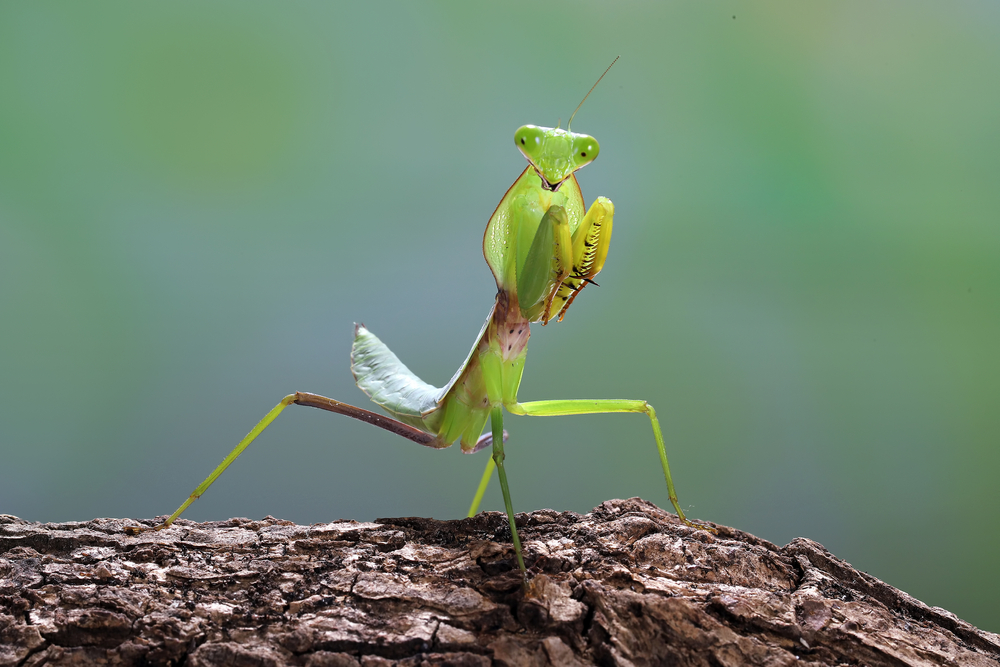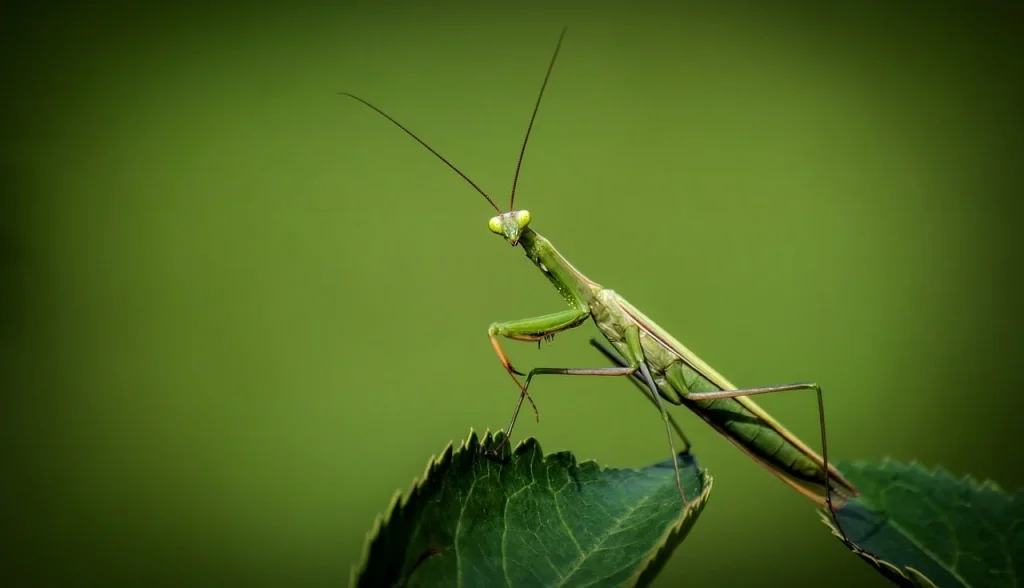Curious about the praying mantis and what makes it so special? You’re not alone! Many people find these insects fascinating because of their unique features and behaviors. From their alien-like appearance to their impressive hunting skills, praying mantises are full of surprises.
In this article, we’ll share some fun facts about the praying mantis that will not only inform but also entertain you. So, get ready to jump into the epic world of one of nature’s most enigmatic predators!
The praying mantis is a master of patience and precision.
David Attenborough

Praying Mantis Facts
Learn amazing facts about the praying mantis that will surprise you. Make sure to read carefully, as a quiz awaits you at the end to test your knowledge!
- These insects can turn their heads 180 degrees to scan their surroundings.
- Their front legs, equipped with spikes, are used for snagging prey.
- The only insect capable of rotating its head like a bird is this one.
- Some species mimic flowers or leaves to ambush their prey.
- They are one of the few insects known to engage in cannibalism, particularly after mating.
- Females often consume the male after or during mating to gain additional nutrition for laying eggs.
- Camouflage plays a crucial role in their hunting strategy.
- These creatures have two compound eyes and three simple eyes.
- Despite their predatory efficiency, they move in a jerky, robotic manner.
- They have excellent binocular vision, which helps in accurately gauging the distance of their prey.
- Some species have wings and can fly, particularly males during mating season.
- They can grow up to 6 inches long, depending on the species.
- These predators are so adept that they can even capture hummingbirds.



9 Comments
very interesting, few things did not know
don’t send me anymore emails how did you get it anyway stop the junk that takes up mt time PLEASE!!!!
I am a science major graduating with honors our of a fine college in Colorado, then California. I truly enjoy these insect articles, particularly the one on the Prey Mantis. A great read! You know I have bookmarked this site for more enjoyable reading. Thank you so much.
I am a science major graduating with honors out of a fine college in Colorado, then California. I truly enjoy these insect articles, particularly the one on the Prey Mantis. A great read! You know I have bookmarked this site for more enjoyable reading. Thank you so much.
It’s not consummating, but consuming. Consummating a marriage is by sexual intercourse. Funny mistake.
Am a nature lover such amazing facts make me glorify our God The Almighty creator of the heavens and the earth
I’ve always been fascinated with the insects. Once I noticed one on my windshield after I’d stopped for fuel.. it was a bright,, lime green color and quite lovely.. i grabbed my cell phone and snapped a few pictures. After I returned home I used a filter to spice up my photos,, put hair on some,, hats on others, etc. I sent them to my granddaughters to enjoy and they did just that! Thanks for sharing the information. P.S. I hope I never see a mantis eating a hummingbird!! They’re my favorites ♡
You said consummating instead of consuming.
Can you post the correct answers? I scored 9/10 both times I took the quiz.